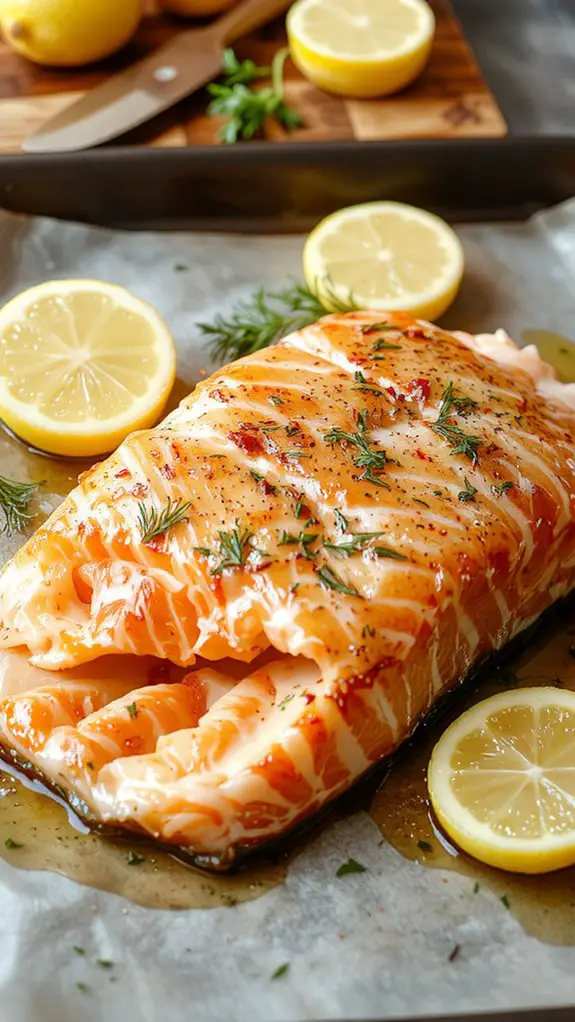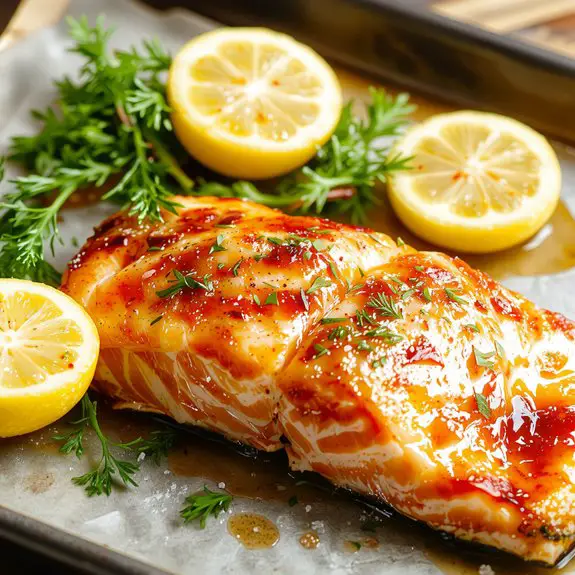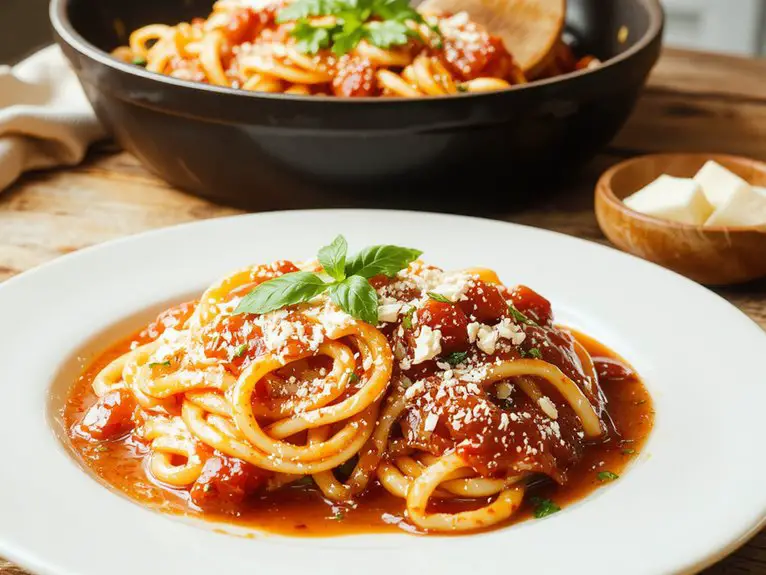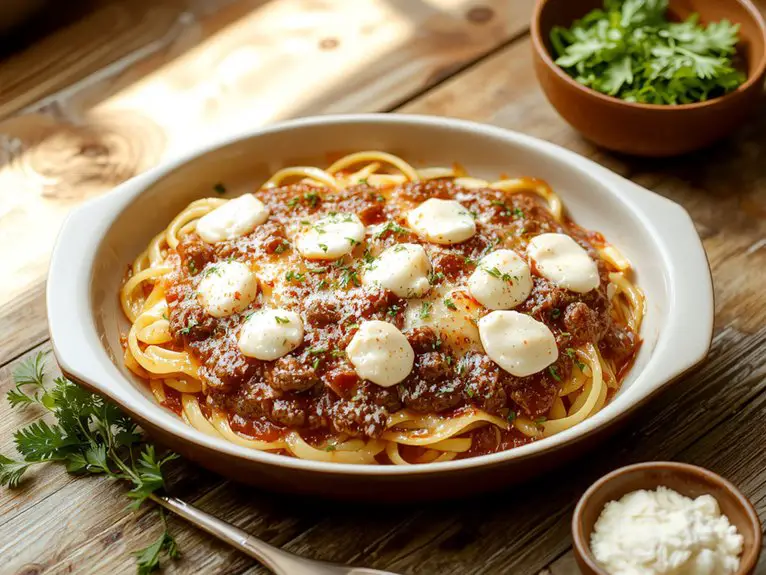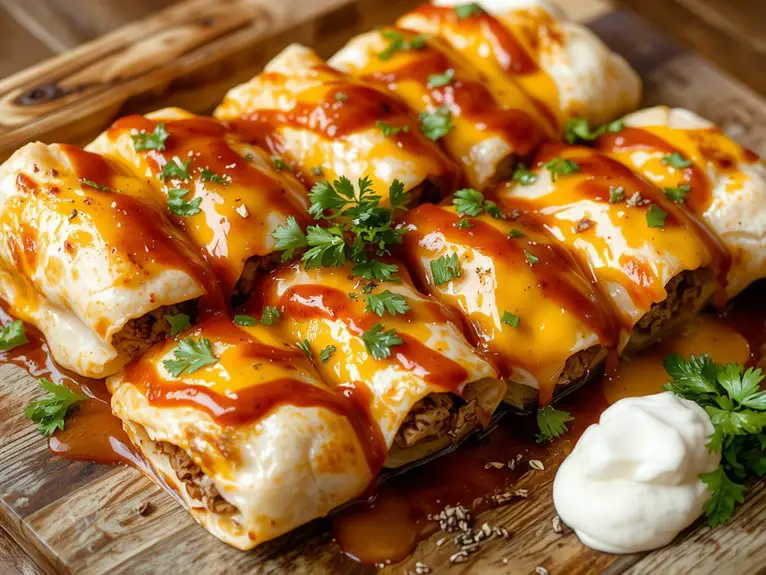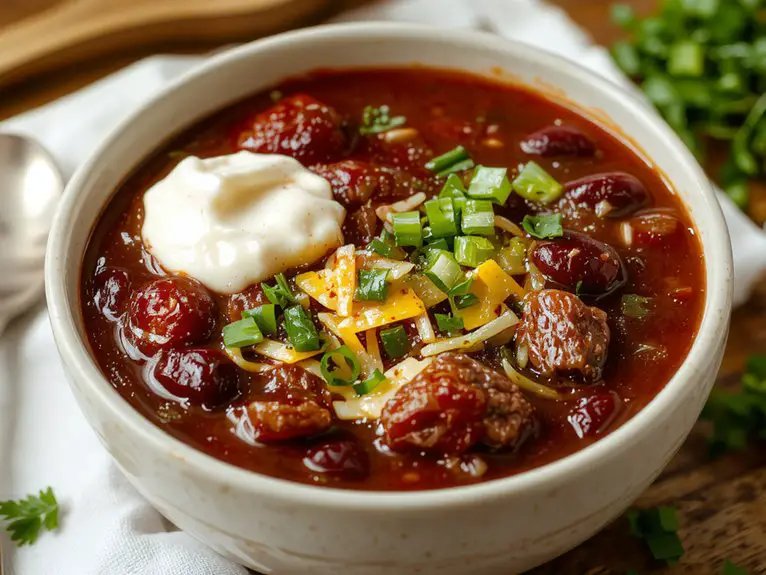Recipe
This is hands down the best baked salmon recipe you’ll ever make—flaky, flavorful, and impossibly easy.
The secret? A simple marinade of garlic, lemon, and fresh herbs that transforms humble salmon into a showstopper.
Every bite melts in your mouth with a perfect balance of tangy brightness and buttery richness.
Whether you’re cooking for a weeknight dinner or impressing guests, this dish feels fancy but comes together in under 30 minutes.
Trust me: once you try it, you’ll keep coming back. Let’s make dinner unforgettable.
Ingredients
For the best-baked salmon, quality ingredients are key. Fresh salmon is non-negotiable—it’s the star of the dish, so opt for wild-caught if possible for its superior flavor and texture.
Olive oil keeps the fish moist and helps the seasoning adhere, while a squeeze of fresh lemon adds brightness that complements the richness of the salmon.
Don’t skimp on the garlic and herbs—they build layers of flavor that make this dish unforgettable.
- Salmon: 1 to 1½ pounds of fresh salmon fillet, skin-on or skinless (wild-caught for best results).
- Olive oil: 2 tablespoons—this helps the seasoning stick and prevents sticking to the pan.
- Fresh lemon: 1 lemon, sliced into rounds for baking, plus extra wedges for serving.
- Garlic: 3 cloves, minced—this adds depth and aromatic richness.
- Fresh herbs: 2 tablespoons of chopped dill, parsley, or thyme (or a mix). Dried herbs can work in a pinch—use 1 teaspoon.
- Salt and pepper: 1 teaspoon of kosher salt and ½ teaspoon of freshly ground black pepper for seasoning.
- Butter (optional): 1-2 tablespoons for extra richness—dot on top before baking.
- Honey or maple syrup (optional): 1 tablespoon for a hint of sweetness to balance the tanginess.
Pro tips: For a crispier top, broil the salmon for the last 2-3 minutes. If you’re out of fresh garlic, garlic powder (½ teaspoon) can substitute.
Fresh herbs are ideal, but dried herbs will still add flavor if that’s what you have on hand. Garnish with extra lemon wedges and herbs for a restaurant-worthy finish.
How to Make the Best Perfectly Seasoned Baked Salmon

– Preheat the oven to 375°F (190°C): This guarantees the oven is at the right temperature for even cooking.
Pro tip: Use an oven thermometer to verify accuracy.
– Line a baking sheet with parchment paper or foil: This prevents sticking and makes cleanup a breeze.
For extra flavor, lightly oil the foil.
- Pat the salmon dry with paper towels: Removing excess moisture helps the seasoning stick and promotes a perfectly crisp exterior.
- Season the salmon generously on both sides: Use a mix of salt, pepper, and your favorite herbs or spices.
Pro tip: A squeeze of lemon juice adds brightness.
- Place the salmon skin-side down on the prepared baking sheet: This keeps the fish moist and allows the skin to crisp up slightly.
- Bake for 12-15 minutes, depending on thickness: The salmon is done when it easily flakes with a fork and reaches an internal temperature of 145°F (63°C).
Watch out: Overcooking dries out the salmon.
– Let it rest for 5 minutes before serving: This allows the juices to redistribute, guaranteeing a moist and flavorful bite.
Pro tip: Cover loosely with foil to keep it warm.
- Garnish with fresh herbs, lemon wedges, or a drizzle of olive oil: Adds a fresh, vibrant finish to your dish.
- Optional: Broil for 1-2 minutes for a golden crust: Keep a close eye to prevent burning—this step is quick but impactful.
- Serve immediately: Salmon is best enjoyed fresh out of the oven for peak flavor and texture.
Nutrition
This baked salmon recipe is not only delicious but also packed with essential nutrients. Here’s the nutritional breakdown per serving.
| Nutrition | Amount per Serving |
|---|---|
| Calories | 367 kcal |
| Protein | 35 g |
| Fat | 23 g |
| Saturated Fat | 4 g |
| Carbohydrates | 3 g |
| Fiber | 0 g |
| Sugar | 1 g |
| Cholesterol | 94 mg |
| Sodium | 420 mg |
Chef Tips
While knowing the nutritional value is helpful, mastering the technique makes all the difference. I always pat the salmon dry before seasoning—it guarantees a crispier skin.
Preheat your oven to 375°F and place the fish skin-side down on parchment paper. Cooking time depends on thickness, but I check for doneness when it flakes easily.
Let it rest for 3 minutes; it locks in moisture and flavor perfectly.
Frequently Asked Questions
Can I Use Frozen Salmon for This Recipe?
Yes, I can use frozen salmon for this recipe. I’ll thaw it in the fridge overnight first to guarantee it cooks evenly. Pat it dry before baking to avoid excess moisture and keep the texture perfect.
How Do I Know if the Salmon Is Cooked Properly?
I check if the salmon’s opaque and flakes easily with a fork; the internal temperature should reach 145°F. If it’s still translucent or tough, it’s undercooked. Overcooked salmon’s dry, so I watch it closely.
Can I Substitute Lemon With Other Citrus Fruits?
Yes, I can substitute lemon with other citrus fruits like lime, orange, or even grapefruit. They’ll add a similar acidity and brightness, but I’ll adjust the amount to match the flavor intensity I’m looking for.
What Side Dishes Pair Well With Baked Salmon?
I’d pair baked salmon with roasted asparagus, garlic mashed potatoes, or a quinoa salad. Steamed green beans, wild rice, or a fresh arugula salad with lemon vinaigrette also complement its flavors perfectly. You’ll love these combos!
Is It Safe to Eat Salmon Skin After Baking?
Yes, it’s safe to eat salmon skin after baking if it’s cooked properly—crispy and free of scales. I always check that it’s from a trusted source and cook it thoroughly for the best texture and flavor.

